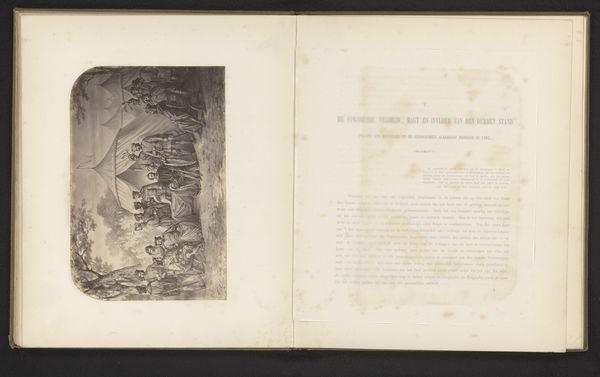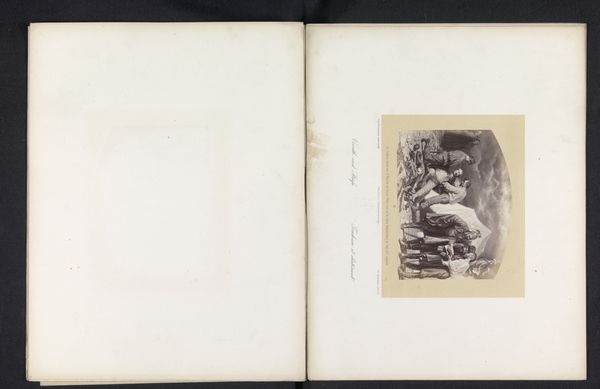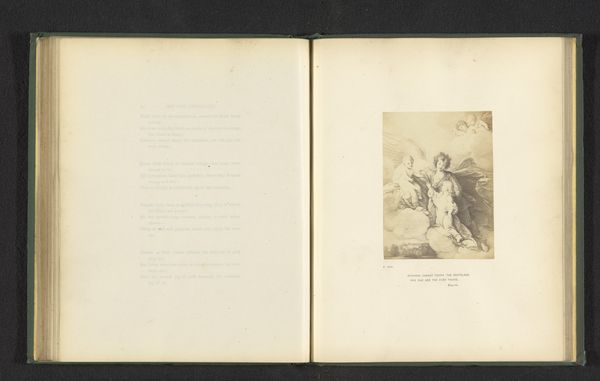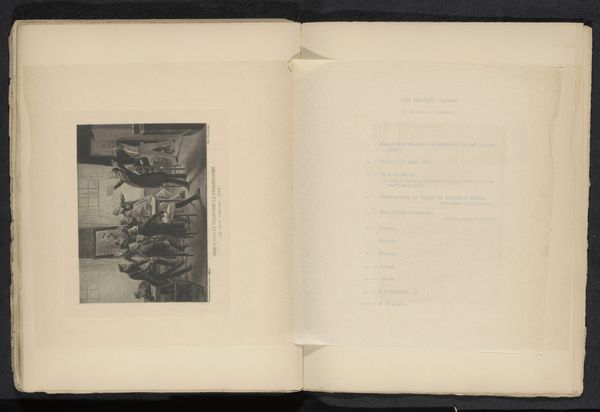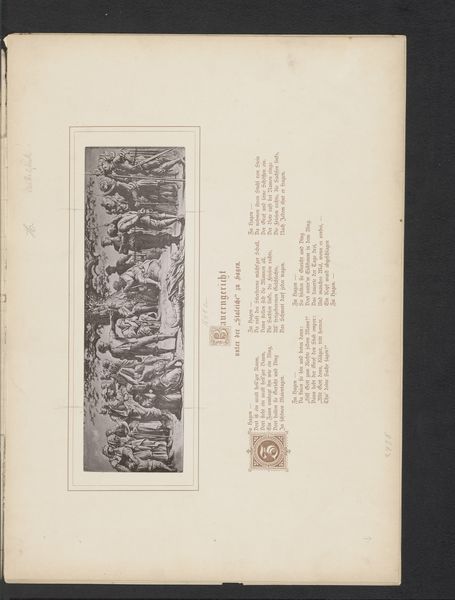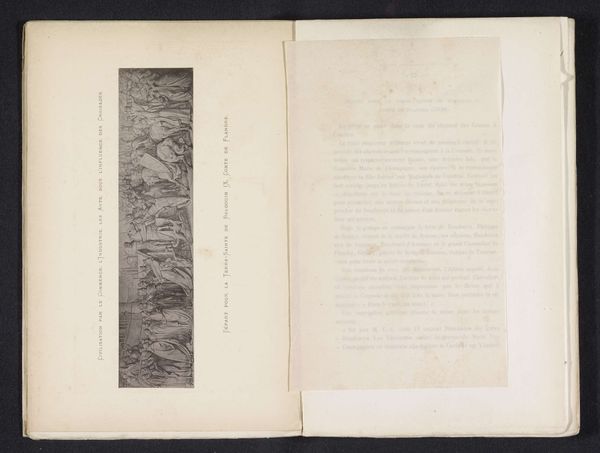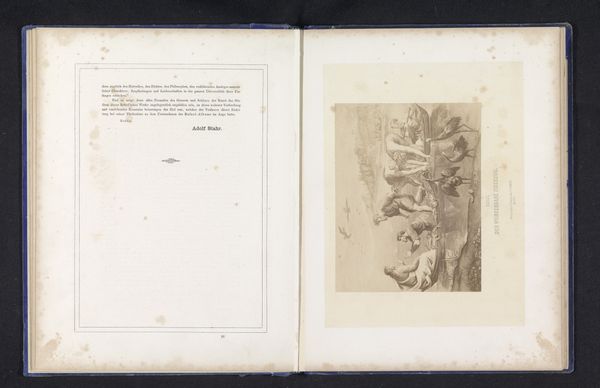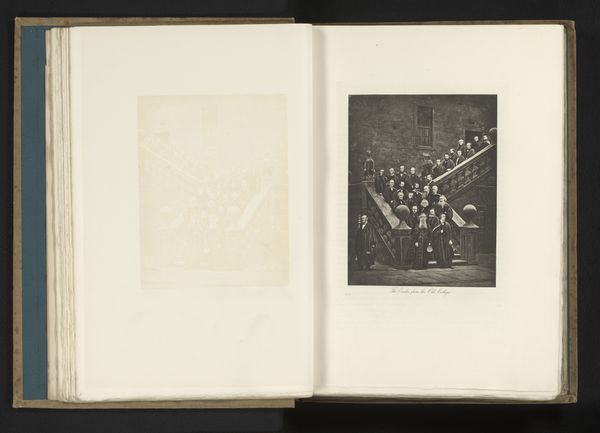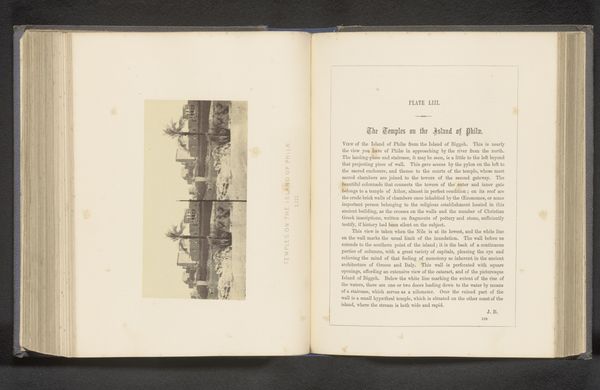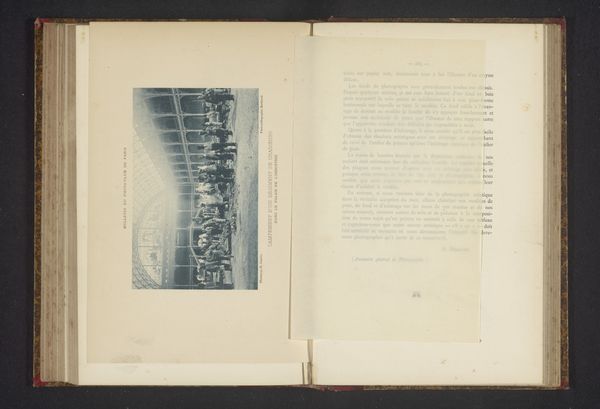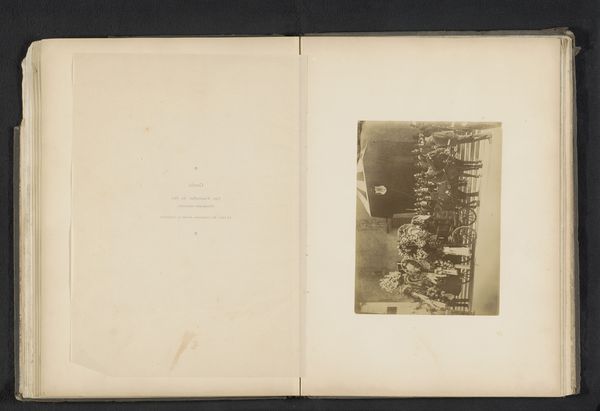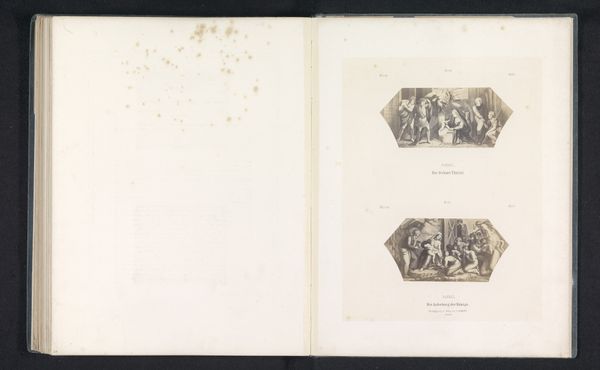
Fotoreproductie van een prent van een bijeenkomst aan het hof van Karel de Grote before 1861
0:00
0:00
print, engraving
# print
#
history-painting
#
academic-art
#
engraving
Dimensions: height 129 mm, width 212 mm
Copyright: Rijks Museum: Open Domain
Curator: So, here we have what’s listed as “Fotoreproductie van een prent van een bijeenkomst aan het hof van Karel de Grote”—or, in English, "Photographic reproduction of a print of a gathering at the court of Charlemagne.” It's dated to before 1861, made via engraving, and attributed to W.A. van Hoek. Quite detailed. What catches your eye about it? Editor: You know, initially, it has a solemn, almost theatrical quality to me. A procession of figures, stark monochrome… it’s very composed, formal. The texture from the engraving lends an interesting depth despite the limited color palette, like looking at figures carved from ivory in a half-lit space. Curator: Exactly. The technique highlights a clear engagement with the means of production; printmaking wasn't simply replicating imagery, but re-interpreting it. Note the material considerations of ink and paper – their quality, their lifespan and how it shapes accessibility to this imagery of power. The mass production suggests intended widespread dissemination. Editor: Right, not a unique canvas painting intended only for wealthy buyers. More populist in reach maybe? It almost romanticizes the Charlemagne court. All those faces rendered, so uniformly reverential… Was this piece possibly tied to solidifying some 19th-century national identity? The history seems staged. Curator: Potentially, or tapping into pre-existing notions about a unified empire. The piece clearly leans towards an academic-art approach to history-painting which itself had particular values. There’s also a certain appeal to "high culture" or ideal governance at work, isn't there, perhaps a commentary on contemporary statecraft itself via that very historicising. Editor: Hmmm... yes, looking at it now, there is indeed that aspirational quality – the way the subjects' clothing is painstakingly detailed, creating textures and weight visually. You can sense its trying to impart weight through accuracy as well. I do enjoy how a reproduction invites us to muse on themes that the makers were, or weren't conscious of while creating the imagery, however! Curator: Absolutely. Analyzing material and artistic creation in specific historical context – understanding who could afford to buy prints and what was available and cheap makes historical inquiry richer indeed. Editor: Well, for me this print offers an interesting peek into how art translates history. We’ve really turned it inside out, haven't we?
Comments
No comments
Be the first to comment and join the conversation on the ultimate creative platform.
